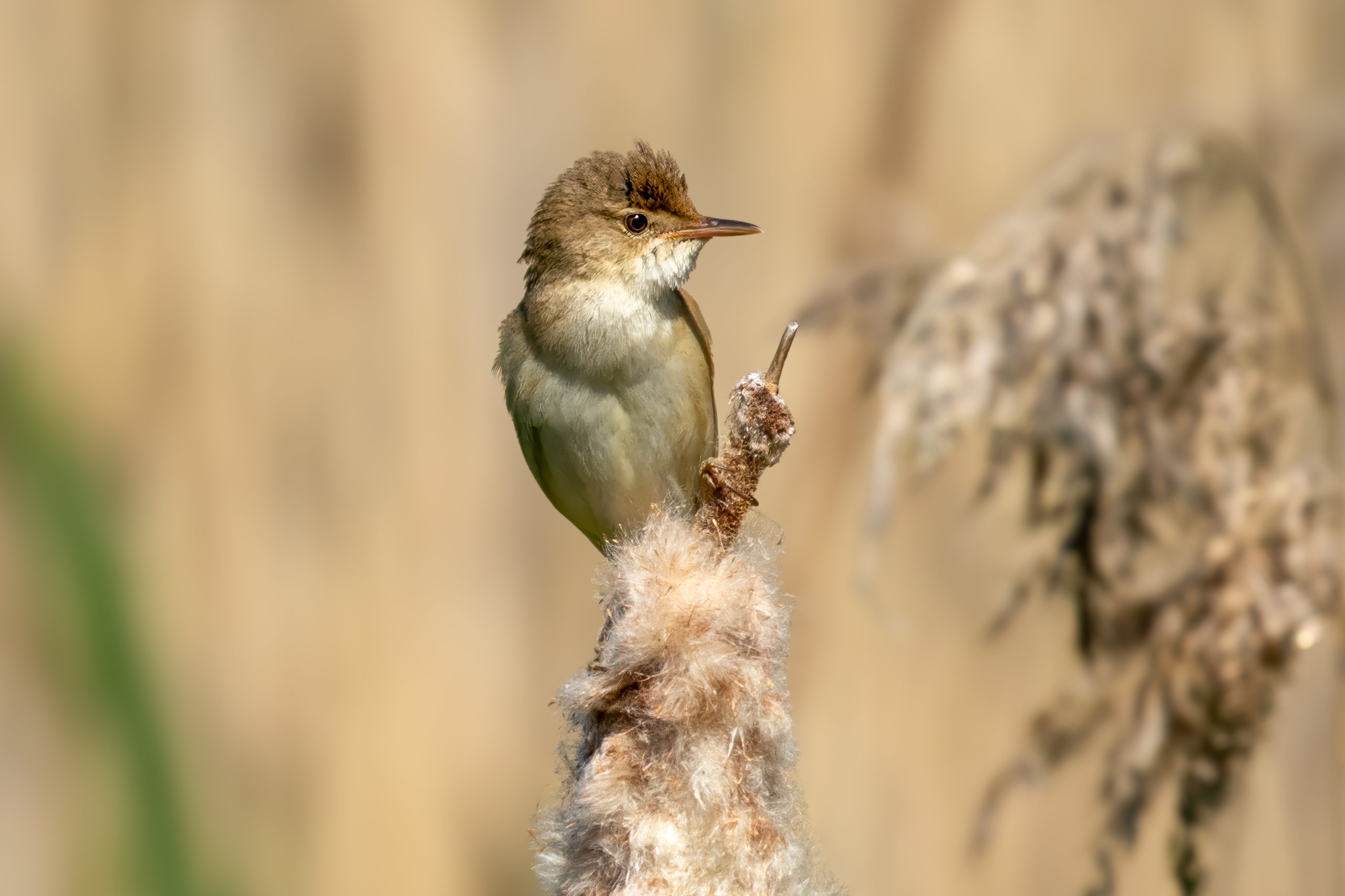Marsh Warbler
(Acrocephalus palustris)
Description
The marsh warbler (Acrocephalus palustris) is a small passerine bird that breeds in Europe and Western Asia, and winters in southeastern Africa. It has an olive-brown upper body with a paler, creamy underbody. It measures about 13 cm (5.1 in) in length with a wingspan of approximately 19-21 cm (7.5-8.3 in), and it typically weighs between 10 to 14 grams (0.35-0.49 oz). This warbler is renowned for its vocal mimicry, often incorporating the songs of other bird species into its own repertoire. This mimicry is not only impressive but also aids in mate attraction and territorial defense. It can be heard both during the day and at night in the breeding season.
The marsh warbler can be confused with the common reed warbler (Acrocephalus scirpaceus). However, it can be differentiated by its more vibrant song imbued with mimicry and slightly greener upperparts, with the reed warbler being more brown. The marsh warbler also exhibits a more distinct supercilium (eyebrow line) than the common reed warbler.
Diet & habitat
Marsh warblers primarily inhabit dense vegetation near water bodies, such as marshes, reed beds, and wet meadows. They are also found in overgrown gardens and hedgerows during the breeding season. Their diet mainly consists of insects and spiders, which they forage by gleaning from foliage and capturing in mid-air. During the migration period, they may also consume berries and other small fruits.
Migration
The marsh warbler is a long-distance migrant, traveling between its breeding grounds in Europe and Asia and its wintering grounds in sub-Saharan Africa. It embarks on its migration journey in late summer to early autumn, typically between August and September, and returns to Europe around May. The migration routes cover several thousand kilometers, demonstrating the species’ remarkable endurance and navigational abilities.
Nesting
Breeding season for the marsh warbler occurs from late May to early July. Males establish territories and attract females through their complex songs. Once paired, the female builds a cup-shaped nest low in dense vegetation, often in tall grasses. She lays a clutch of 3 to 6 eggs, which are incubated for about 12 to 14 days. Both parents share feeding duties, and the chicks fledge approximately 10 to 12 days after hatching. The young remain dependent on their parents for a few more weeks before becoming fully independent.
Status
The marsh warbler is currently classified as least concern by the IUCN. Although its population is generally stable, some local declines have been noted, primarily due to habitat loss and degradation.





